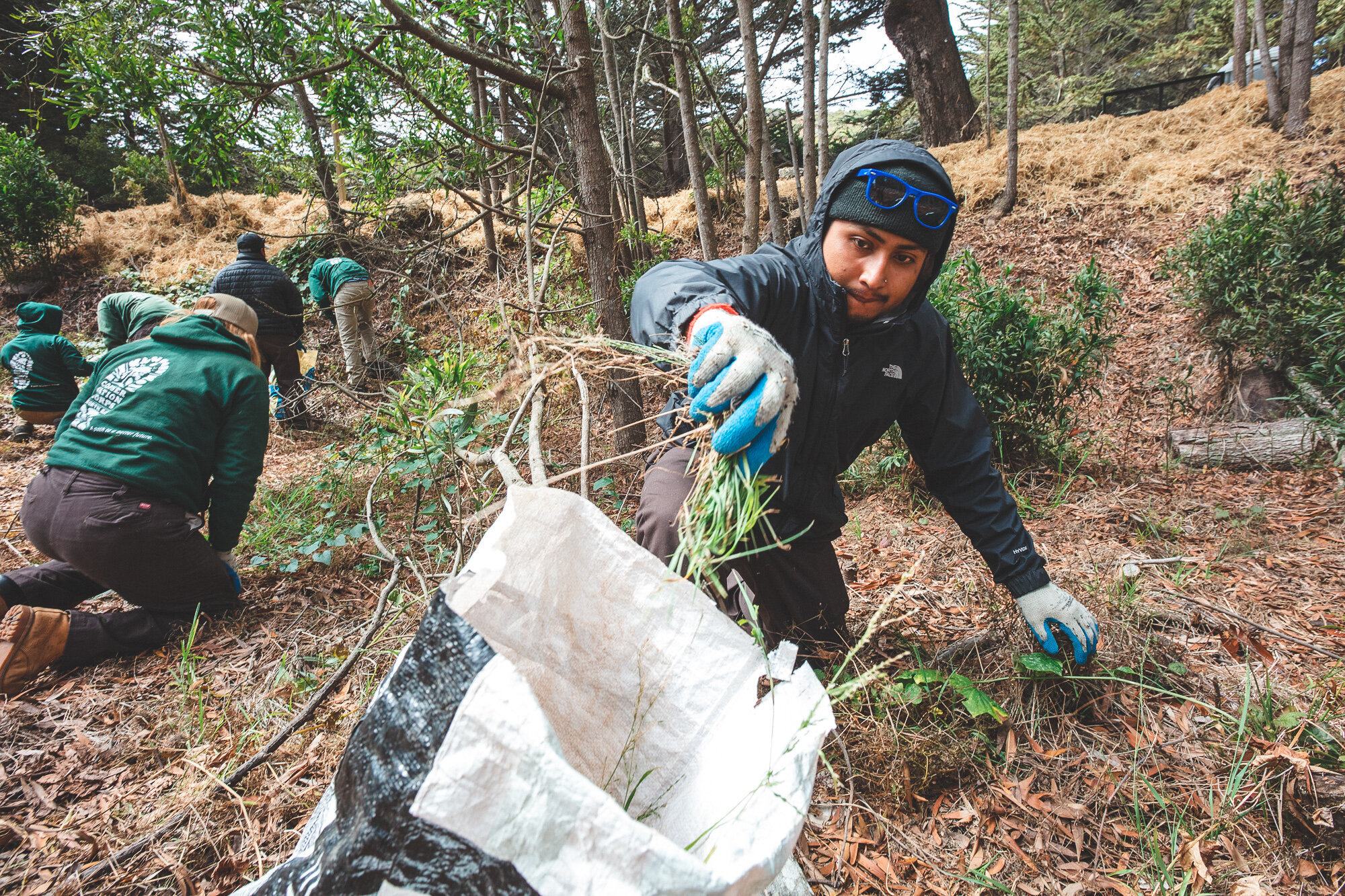
Who is the Workforce?
When people think of ecological projects, many think only of the biologists, designers, scientists, and engineers, yet every ecological restoration and natural infrastructure project depends on the on-the-ground trade workers for its implementation.
The Ecological Workforce are the laborers, equipment operators, and other trade workers who implement environmental restoration, mitigation, and natural infrastructure projects, interfacing directly with natural resources. These on-the-ground workers must have specialized skills and understanding to work appropriately in sensitive habitats around species of concern and cultural resources and within permitting constraints.
Why Focus on the Workforce?
Despite being critical to project success, the laborers and equipment operators who do the critical hands-on work to restore wetlands, rivers, forests, and grasslands are often overlooked and undervalued. Additionally, historically marginalized communities are not equitably participating in the economic benefits of significant public investment in climate resilience and natural infrastructure projects.
Through creating equitably accessible pathways to these living wage careers, we see an opportunity to ensure that underserved communities economically benefit from the historic influx of funding while improving restoration project outcomes for greater ecological resilience and community well-being.
UPLIFTING COMMUNITIES AND ECOLOGY
Over 40% of the construction cost of ecological restoration projects goes directly to the wages of the workers on the ground. With the largest percentage of money invested in ecological restoration projects going into the hands of the workers implementing the projects, the growth of restoration funding has the potential to dramatically uplift not just the health of the environment and the physical health of the communities near the restoration sites but also the financial health of the communities the workers call home through direct access to the living wage jobs being created.
Why now?
There is a historic influx of funding for climate resilience and natural infrastructure project construction. As the National Skills Coalition and Blue Green Alliance outline in their Data Brief, investments from the Inflation Reduction Act, the Bipartisan Infrastructure Law, and the CHIPS and Science Act programs are expected to generate a combined average of 2.9 million jobs per year and 19 million job-years over the life of these laws - primarily in construction, which includes ecological restoration trade jobs.
Yet it is estimated that there will be a shortage of 1.1 million workers across the U.S. construction sector alone. Without specialized training and other workforce investments, candidates will lack the skills to fill these jobs. We believe this is an enormous opportunity for historically marginalized communities to participate in the economic benefits of this significant public investment.
OUR SOLUTION
To work appropriately in sensitive habitats requires specialized skills and knowledge, yet there are currently no set standards across the sector, and training varies dramatically from employer to employer.
Our professional-level, standardized training provides a pathway for new workers to enter the field, to uplevel the skills of the current workforce, and to improve restoration project outcomes for greater ecological resilience. We provide our training in English and Spanish with bilingual/bicultural trainers with significant experience in ecological restoration project construction. We provide both classroom-based and field-based instruction and mentoring, ensuring workers have the knowledge and skills to work effectively restoring sensitive habitats.
The Workforce is at
the centeR







